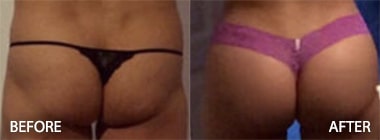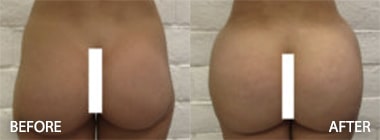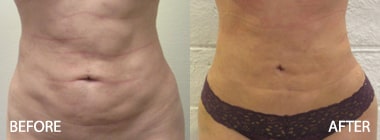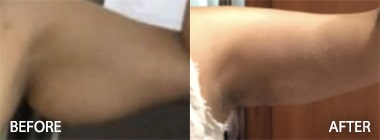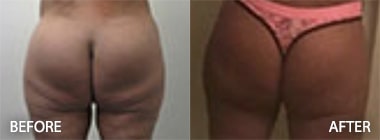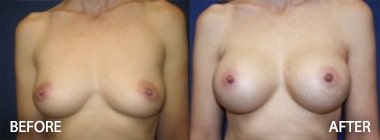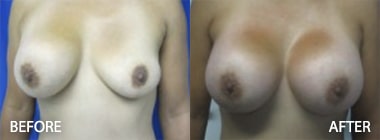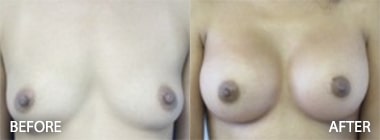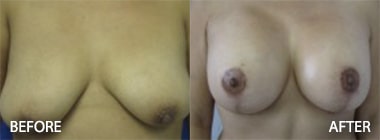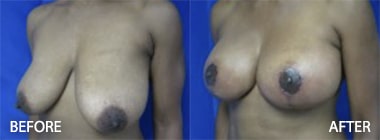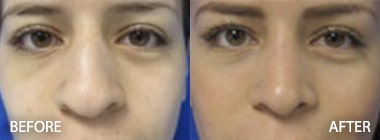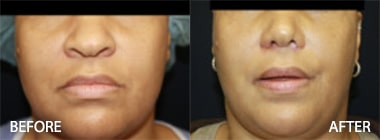Complications of Acellular Dermal Matrices in breast surgery Despite the fact that acellular dermal matrices are treated under aseptic conditions to...
Hughes
Plastic Surgery
Harvard-Educated, Harvard-Trained Board Certified Plastic Surgeon
TOP PLASTIC SURGEON
IN LOS ANGELES AND BEVERLY HILLS
Los Angeles, CA | (310) 275-4170
Month: July 2014
Part IV: Dermal Matrices in Secondary Breast Augmentation
Acellular Dermal Matrices for Secondary Deformities in Breast Augmentation Owing to the benefits of acellular dermal matrices in breast...
Part III: Dermal Matrices in Breast Reconstruction and Augmentation
Acellular Dermal Matrices for Breast Implant Reconstruction after Mastectomy The use of a tissue expander or a breast implant in post mastectomy...
Part II: Dermal Matrices in Breast Augmentation
The use of acellular dermal matrices in breast reconstruction is becoming more popular in part due to the better cosmetic and psychological outcomes...
Article 7: The Role of the Paramedian Incision
The Lateral Paramedian: Revisiting a Forgotten Incision Introduction The objective of this review article is to revisit the lateral paramedian...
Breast Augmentation Articles 8
Complications of Breast Augmentation Complications of breast augmention surgery include hematoma, seroma, wound infection, and permanent alterations...
Capsular Contracture in Breast Augmentation
Capsular Contracture in Breast Augmentation Capsular contracture results from an exaggerated scar response to a foreign prosthetic material. The...
Breast Augmentation Articles 6
Incisions and Approaches to Breast Augmentation: Transaxillary and Transumbilical Transaxillary Breast Augmentation (implant through the armpit) The...
Chapter 7 Scar Revision in Plastic Surgery
Introduction Scars are the inevitable result of any surgical procedure. The goal of the Plastic Surgeon is to generate a scar that does not...
Breast Augmentation Articles 5
Determining Implant Size and Incisions in Breast Augmentation: Inframammary and Infraareolar Determining the Right Size Implant for the...
Article 6: Desmoid tumors of Bilateral Breasts
Desmoids of the Shoulder and Bilateral Breasts in the absence of FAP or Gardner’s Syndrome: A Case Report and Review of the Literature Abstract...
Chapter 6 The Role of Dermal Matrices in Breast Augmentation
Breast Augmentation and particularly revision breast augmentation requires extremely specialized knowledge in the role of dermal matrices. Dr....
Article 5: Melanoma and the Role of Sentinel Lymph Node Biopsy
Examining the Utility of Performing Sentinel Node Biopsies for T1 melanomas with Breslow depths between 0.75 and 1.0 mm: A Review of a 20 Year...
Chapter 5 Fillers
General Filler Characteristics 1) Describe the ideal filler Biocompatible, inexpensive, easily obtained,...
Breast Augmentation Articles 4
Evaluation of the Breast Augmentation Surgery Patient Dr. Hughes will evaluate the patient's chest wall and breast form. He will point out chest...
Tummy Tuck Articles 8
Postoperative Management and Complications in Tummy Tuck Postoperative Management in Tummy Tuck Generally, one drain is placed after a...
Article 4: Protocol for the Management of Keloid Scars
Insights into the Management of Keloid Scars: A Survey-Based Protocol Kenneth B. Hughes, M.D. Abstract In the broad array of literature as it...
Chapter 4 Fat Grafting
Chapter 4: Fat Grafting Kenneth B. Hughes, M.D. Division of Plastic and Reconstructive Surgery Beth Israel Deaconess Medical Center Harvard Medical...
Tummy Tuck Articles 7
Mini Tummy Tucks, Short Scar Tummy Tucks, and Standard Tummy Tucks Mini-abdominoplasty (Mini tummy tuck) Candidates The mini-abdominoplasty...
Tummy Tuck Articles 6
Operative Details and Safety in the Tummy Tuck In the operating room, the patient is positioned on the operating table so that he or she can be...
Article 3: Breast Reconstruction after Mastectomy
The Effect of Radiation on Complication, Reoperation and Capsular Contracture Rates in Implant-Based Breast Reconstruction Following the...
Chapter 3 Facelift
Facelift / Rhytidectomy Kenneth Hughes, MD Other Facial Aging Procedures brow lift upper and lower eyelid procedures facial fat grafting chin...
Breast Augmentation Articles 3
Silicone Implants and Implant Controversies All silicone gel implants are cross-linked to maintain a gel consistency. As the cross-linking is...
Tummy Tuck Articles 5
Subgroups of Tummy Tuck Patients Patients anatomically can be grouped into types I, II, III, IV. A type I patient has good skin elasticity, good...
Tummy Tuck Articles 4
Risks Particularly Associated with Tummy Tuck seroma (fluid collection, which typically must be drained with a needle and syringe) dehiscence...
Article 2: Breast Implant Reconstruction after Radiation
The Effect of Radiation on Complication, Reoperation, and Capsular Contracture Rates in Implant-Based Breast Reconstruction with the Introduction of...
Chapter 2 Photography in Plastic Surgery
Photography in Aesthetic Head and Neck Surgery Kenneth Hughes, MD Introduction Photography is essential to documenting results in all forms of...
Breast Augmentation Articles 2
The Evolution of Saline and Textured Implants The inflatable saline-filled implant was first reported by Arion in France in 1965. The saline implant...
Tummy Tuck Articles 3
Physical Exam in the Tummy Tuck Patient If there is skin laxity, the lower abdominal skin should be pinched to determine the amount that can safely...
Tummy Tuck Articles 2
The Vascular Territories of the Tummy Tuck The abdomen is divided into three vascular zones. The midabdomen is supplied by the deep epigastric...
Article 1: The Role of Telemedicine in the Management of the Cosmetic Surgery Patient
Telemedicine: Risks, Benefits, and Pitfalls in the Postoperative Care of Plastic Surgery Patients and Review of the Literature Background As a...
Part I: Types of Dermal Matrices in Breast Augmentation
The use of acellular dermal matrices, available since 1994, has become more widely accepted in abdominal wall and breast reconstruction procedures...
Chapter 1 Preoperative Workup in the Plastic Surgery Patient
Preoperative Evaluation in Aesthetic Head and Neck Surgery Kenneth Hughes, MD Anatomical Norms A general recognition of facial norms and...
Breast Augmentation Articles 1
The History of Breast Augmentation in the US Glandular hypomastia (small breasts) occurs either developmentally or by postpartum involution....
Tummy Tuck Articles 1
Goals of Tummy Tuck Dr. Kenneth Hughes performs many tummy tuck surgeries in Los Angeles and Beverly Hills. The tummy tuck should improve the...
Face and Neck Lift Article 10
Secondary Facelifts Secondary facelifts are those facelifts in patients who have had plastic surgery performed before. These are usually more...
Face and Neck Lift Article 9
Optimal Scar Placement in Facelifts The scar around the earlobe is perhaps the most important. The scar should not lie directly in the...
Face and Neck Lift Article 8
Facelift Complications Continued Infection Infection in plastic surgery of the face is uncommon due to the generous blood supply of the head and...
Face and Neck Lift Article 7
Complications of Facelift Hematoma is most common. Its incidence has been recorded in various series as ranging from 1% to 8%, with an average of...
Upper and Lower Eyelids Article 6
Complications of Upper and Lower Eyelid Surgery Patients generally look presentable approximately 2 weeks after surgery. On occasion, prolonged...
Liposuction Article 6
Postoperative Management in Liposuction Many of the goals of postoperative management include avoiding complications and following protocols...
Face and Neck Lift Article 6
SMASectomy SMASectomy involves removing a portion of SMAS. The mobilized SMAS flap is then rotated upward with some posterior traction to accomplish...
Upper and Lower Eyelids Article 5
The Transconjunctival (Scarless) Eyelid Surgery Transconjunctival blepharoplasty involved making an incision inside the lower eyelid by everting the...
Liposuction Article 5
Complications of Liposuction 2 Patients with a higher body mass index have been found to have a significantly increased risk for developing...
Face and Neck Lift Article 5
Deep Plane FACE Lift Deep plane is a term applied by Hamra, who described dissection in the midface superficial to the zygomatic muscle beneath the...
Upper and Lower Eyelids Article 4
Preserving Eyelid Shape and Tone in Eyelid Surgery If lower eyelid tone is poor, Dr. Hughes may advise the patient to have a lateral canthopexy or...
Rhinoplasty Nose Surgery Article 4
Operative Details in Rhinoplasty and Follow-up The Nasal Tip The nasal tip can be altered by dozens of maneuvers. Only the most common maneuvers...
Liposuction Article 4
Complications of Liposuction Dr. Kenneth Hughes has performed thousands of liposuction procedures in Los Angeles and Beverly Hills. Liposuction...
Face and Neck Lift Article 4
Skin Only Facelifts The skin only facelift can be initiated within the temple hair above the insertion of the helix or, alternatively, begins...
Upper and Lower Eyelids Article 3
Traditional Upper and Lower Eyelid Surgery Techniques The traditional upper blepharoplasty commonly must be combined with a brow elevation operation...
Rhinoplasty Nose Surgery Article 3
Operative Details in Rhinoplasty Dr. Hughes will perform a thorough internal and external exam. Nasal photographs are taken for preoperative...
Liposuction Article 3
Types of Liposuction Available Conventional Liposuction (Tumescent Liposuction) Conventional liposuction in which a suction vacuum is used to...
Face and Neck Lift Article 3
What are jowls and how can they be remedied? Jowls are fatty deposits that accumulate along the inferior border of the mid-mandible. The jowl...
Upper and Lower Eyelids Article 2
History and Exam in Upper and Lower Eyelid Surgery Patients History for Upper and Lower Eyelid Surgery Patients should not be taking medications...
Rhinoplasty Nose Surgery Article 2
Nasal Anatomy in Rhinoplasty The Dorsum of the Nose The dorsum is the area of the nose from the forehead to the tip. Patients can have complaints of...
Liposuction Article 2
History for the Liposuction Patient Patients are evaluated for risk factors including smoking, hypertension, heart disease, lung disease, diabetes,...
Face and Neck Lift Article 2
Nasolabial Folds Deep nasolabial folds are especially troublesome after massive weight loss and in those patients with significant maxillary...
Upper and Lower Eyelids Article 1
Principles of Youthful Restoration in Upper and Lower Eyelid Surgery The upper eyelids and the relative skin excess in this area must always be...
Rhinoplasty Nose Surgery Article 1
Analyzing the Deformity in Rhinoplasty Rhinoplasty is considered by most plastic surgeons to be one of the most difficult operations to...
Liposuction Article 1
Overview of Liposuction Dr. Kenneth Hughes has performed thousands of liposuction and liposculpture procedures for patients in the Los Angeles and...
Face and Neck Lift Article 1
Statistics on Facelifting in the US In 1999, according to the statistics of the American Society of Plastic Surgeons, approximately 60,000 Americans...
Share on:
Ready to
Set up a Consultation?
